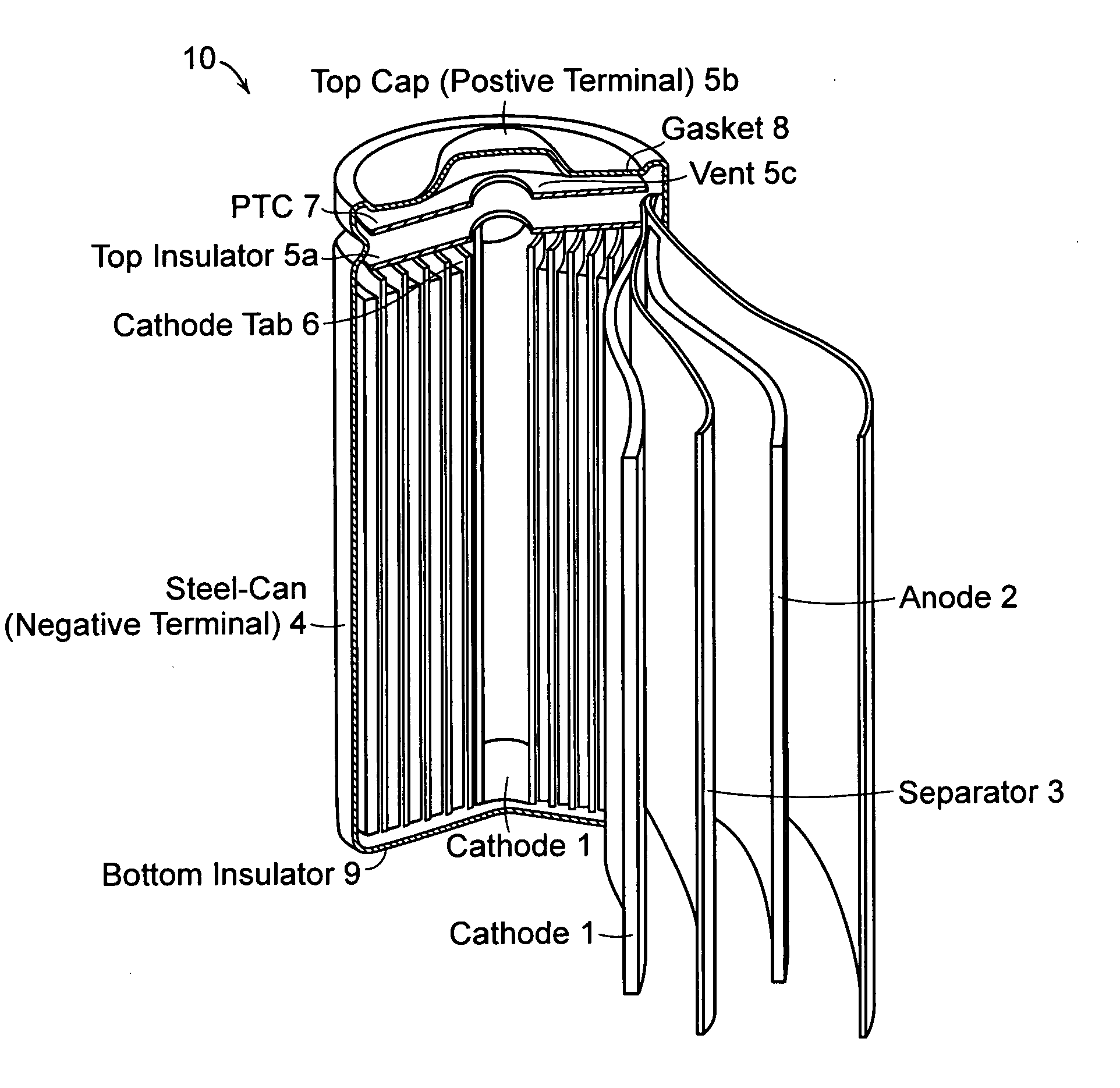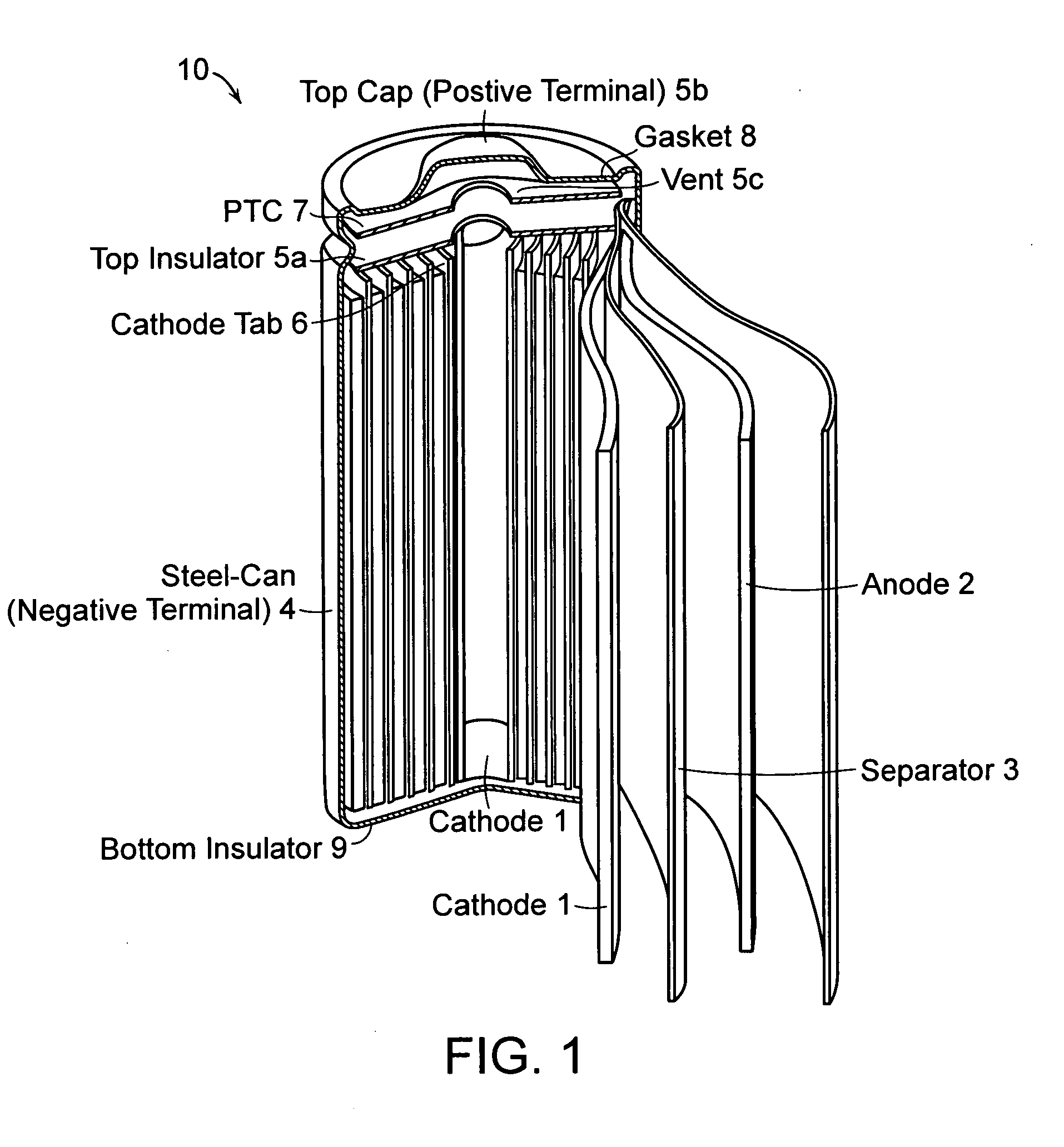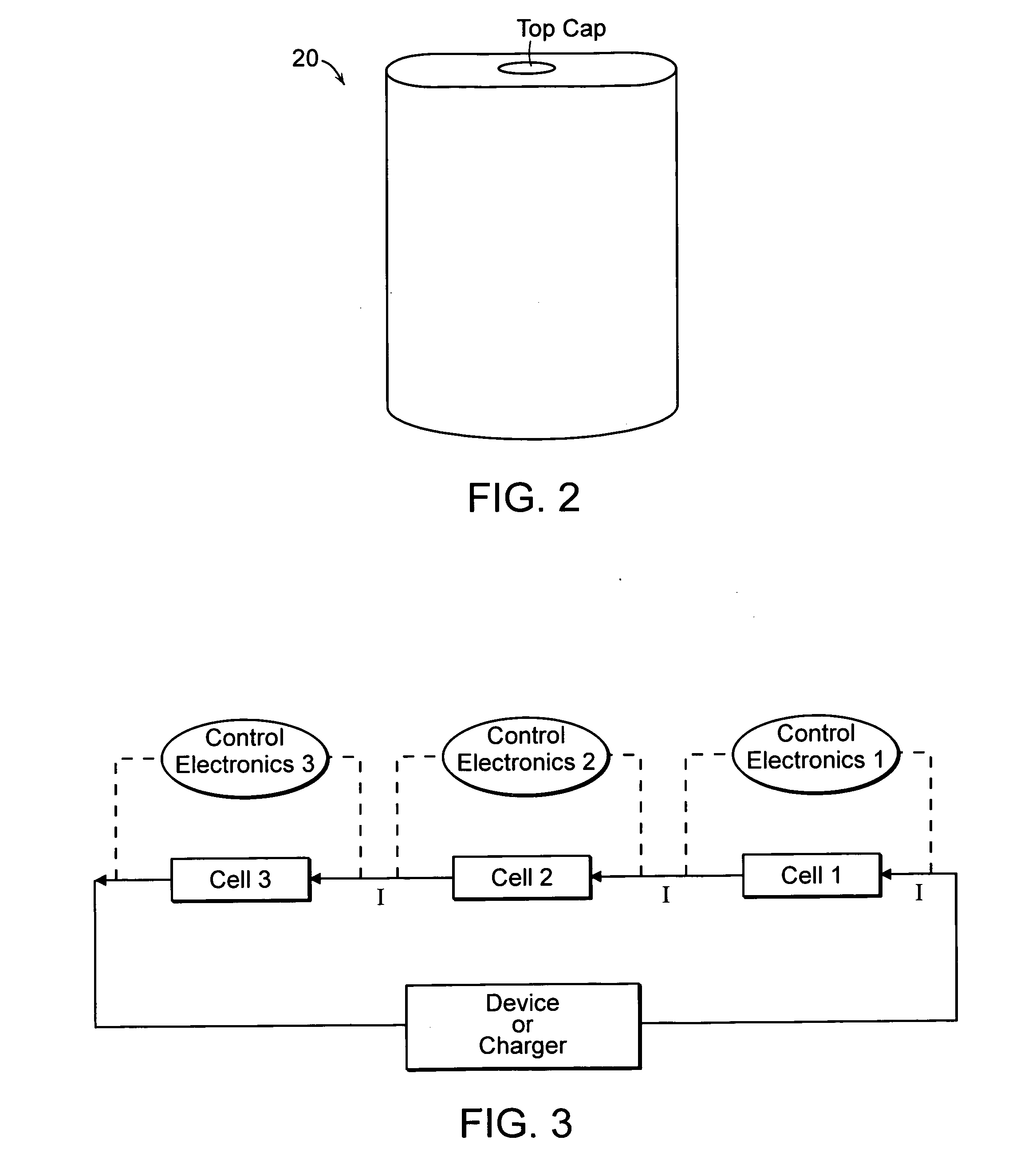Lithium-ion secondary battery
a secondary battery and lithium-ion technology, applied in the field of rechargeable batteries, can solve the problems of unidentical capacity, discharge and charge rate, unbalanced cell pack, over-charge or over-discharge, etc., and achieve the effect of reducing cathode cost, high capacity and reducing cathode cos
- Summary
- Abstract
- Description
- Claims
- Application Information
AI Technical Summary
Benefits of technology
Problems solved by technology
Method used
Image
Examples
example 4
An Oblong Cell with High Capacity Having an Active Cathode Material Including LiCoO2 / LiMn2O4
[0129] 94 wt. % mixed cathode with a weight ratio of 70:30 for LiCoO2:LiMn2O4, 3 wt. % of carbon black and 3 wt. % of PVDF were mixed in NMP under stirring. The electrode slurry was coated onto a 15 micrometer thick Al current collector. The Al current collector had a dimension of width of 56 mm and length of 1568 mm. The slurry was coated on both sides of the Al current collector. The coating length was 1510 and 1430 mm for side 1 and side 2. The process media NMP was removed by heating the coated electrode at 150° C. for a few minutes. The electrode was pressed to control the coated density. The 2-side coating was identical in every aspect. The thickness of the total electrode was 140 micrometers. The composite cathode density was 3.6 g / cc. Two Al tabs with about a width of 3 mm, length of 55 mm and thickness of 0.2 mm were welded onto the uncoated Al current collector.
[0130] 93 wt. % of ...
example 5a (
PROPHETIC EXAMPLE)
A Cell with an Active Cathode Material Including LiCoO2 / LiMn1.9Al0.1O4
[0134] In this example, a prismatic cell with an active cathode material including LiCoO2 / LiMn1.9Al0.1O4 is designed. This cell can be made by a similar procedure as described above in Example 4. For this example, the cathode mix includes 94 wt. % of mixed cathode with a weight ratio of 70:30 for LiCoO2:LiMn1.9Al0.1O4, 3 wt. % of carbon black and 3 wt. % of PVDF. The electrode slurry is coated onto a 15 micrometer thick Al current collector. The Al current collector has a dimension of width of 56 mm and length of 1913 mm. The slurry is coated on both sides of the Al current collector. The coating length is 1913 and 1799 mm for side 1 and side 2. The process media NMP is removed by heating the coated electrode at 150° C. for a few minutes. The electrode is pressed to control the porosity of 25% volume, The 2-side coating is identical in every aspect. The thickness of the single coating layer is ...
example 5b (
PROPHETIC EXAMPLE)
A Cell with an Active Cathode Material Including LiCoO2 / LiMn1.9Al0.1O4 / LiNi0.8Al0.05Co0.15O2
[0139] In this example, a prismatic cell with an active cathode material including LiCoO2 / LiMn1.9Al0.1O4 / LiNi0.8Al0.05Co0.15O2 is designed. This cell can be made by a similar procedure as described above in Example 4:
[0140] 94 wt. % of mixed cathode with a weight ratio of 10:50:40 for LiCoO2: LiMn1.9Al0.1O4:LiNi0.8Al0.05Co0.15O2, 3 wt. % of carbon black and 3 wt. % of PVDF are mixed in NMP under stirring. The electrode slurry is coated onto a 15 micrometer thick Al current collector. The Al current collector has a dimension of width of 56 mm and length of 1913 mm. The slurry is coated on both sides of the Al current collector. The coating length is 1913 and 1799 mm for side 1 and side 2. The process media NMP is removed by heat the coated electrode at 150° C. for a few minutes. The electrode is pressed to control the porosity of 25% volume. The 2-side coating is identical...
PUM
| Property | Measurement | Unit |
|---|---|---|
| internal impedance | aaaaa | aaaaa |
| charge voltage | aaaaa | aaaaa |
| length | aaaaa | aaaaa |
Abstract
Description
Claims
Application Information
 Login to View More
Login to View More - R&D
- Intellectual Property
- Life Sciences
- Materials
- Tech Scout
- Unparalleled Data Quality
- Higher Quality Content
- 60% Fewer Hallucinations
Browse by: Latest US Patents, China's latest patents, Technical Efficacy Thesaurus, Application Domain, Technology Topic, Popular Technical Reports.
© 2025 PatSnap. All rights reserved.Legal|Privacy policy|Modern Slavery Act Transparency Statement|Sitemap|About US| Contact US: help@patsnap.com



